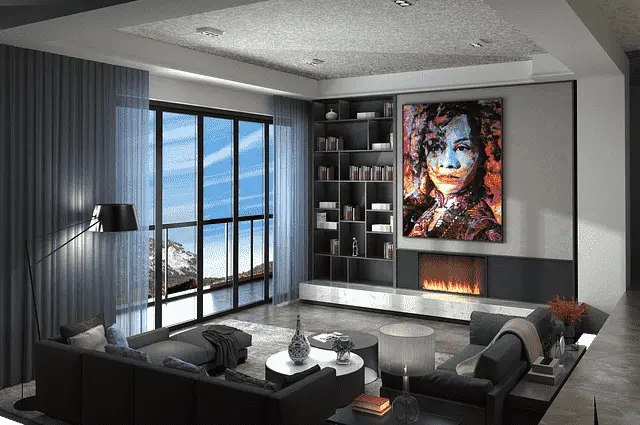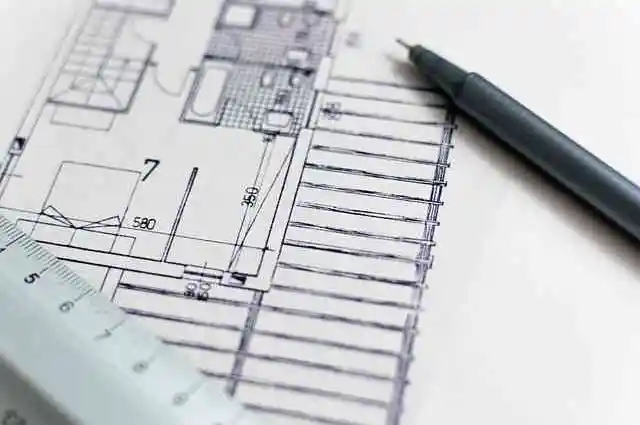On an interior construction project, efficiency is key to meeting tight timeframes, managing costs, and ensuring that outcomes are of the highest quality. With the passing years, technology has been increasingly shaping the industry with all new and improved means for construction companies to increase the productivity of the optimized process. One such game-changer has been the use of an interior wall framing layout robot. This new innovation automates the process of laying out the interior framing for walls and allows building construction crews to frame buildings, with a level of speed and precision that was unimaginable in the past. Adapting to such new technologies will be a great benefit for construction companies, since the adoption will be a great boost in efficiency and accuracy. Such progress helps construction companies do a better job with their projects, hence making the clients happier.
Innovative Technologies in Interior Construction
In the interior construction world, there has been another revolution with the recent introduction of technologies. This is supposed to have led many companies into a frenzy of ways to improve efficiency in projects. Building Information Modeling (BIM) software is one of those revolutionary technologies enabling planners, architects, and construction crews to visualize and plan every part of a build inside a virtual environment. With the introduction of VR and AR technologies, however, construction companies have not been able to afford full immersion during the visualization of the project and hence understand much better how this would look, feel, and perform in reality. These technologies, when used the right way, have seen construction companies realize better communication and coordination; further, they have managed to reduce errors and rework and can now deliver projects much quicker and at a lower cost, hence keeping in line with the expectations of their clients and stakeholders.
Prefabrication and Modular Construction
In addition to these technologies, the rise of prefabrication and modular construction has also played a large role in revolutionizing the way that the interior construction industry operates. These construction methods allow construction companies to accelerate each portion of project delivery by reducing project timelines and cutting costs. Prefabrication involves building as much of a component of a building offsite as possible, which leads to less waste and more efficient resource utilization for the construction crews that will be using it. Modular construction is another important step in this process, and it enables construction crews to assemble entire sections of a building offsite and to transport them to the building’s location in total sections, where they can be quickly and easily installed.
In addition to improved efficiency, these innovative approaches guarantee consistent quality, in part by assembling components in a controlled environment where factors like weather conditions and noise levels can be managed effectively. In addition to reducing the amount of on-site work, this minimizes the disruption to the surrounding area in terms of noise and pollution and lessens the safety risks associated with construction sites of any kind.
Finally, they also offer a level of flexibility and scalability that traditional construction methods simply can’t. On any given project, the needs will change over time. When you leverage prefabrication and modular construction, you’re able to more easily adapt to changing project requirements and market conditions. Furthermore, by standardizing processes and components throughout, you improve efficiency and reduce variability, which result in more predictable project outcomes and improved cost control.
Lean Construction Principles
One of the key ways any construction company can maximize efficiency and minimize waste in interior construction projects involves embracing lean construction principles. Techniques like just-in-time delivery, value stream mapping and continuous improvement instill a culture of efficiency and innovation within project teams. By removing non-value-added activities and optimizing workflows, lean construction practices allow project teams to deliver projects faster than they ever could before – and at a lower cost, all while maintaining the high-quality standards your clients demand and deserve.
These principles also reinforce the importance of collaboration and communication among project stakeholders. By involving every party, from the owner down to the subcontractors, early in the planning and decision making process, construction companies can take advantage of the unique perspectives that are available to them. This, in turn, helps identify potential problems and opportunities for improvement, thereby leading to better project outcomes and increased client satisfaction.
The Integration of Sustainable Practices
Finally, the integration of sustainable practices is growing increasingly important to interior construction projects in particular. By using eco-friendly materials, implementing energy-efficient systems and embracing sustainable construction techniques, project teams are not only minimizing their environmental footprint but are also directly reducing long-term operating costs for clients. These green, sustainable buildings benefit the Earth in terms of energy saved and pollution spared from the environment – but they also appeal directly to a market of ecologically conscious clients. This, in effect, equates to a very powerful and positive brand image for many, many construction companies.
We’ve featured stories in the past about the environmental benefits of sustainable practices in construction but environmentally friendly practices have financial benefits for construction companies, as well. Sustainable buildings deliver long term cost savings that ultimately improve overall profitability by reducing energy consumption and waste generation, as well as cutting down on maintenance costs. In addition, sustainability is an increasingly important factor in project selection and procurement so construction firms that make sustainability a priority will be better positioned to win contracts and attract clients.
Effective Project Management Strategies
Effective project management is imperative to the successful execution of interior construction projects. Project management software can help set up clear channels of communication and strong scheduling and tracking mechanisms that will let project teams track progress and discuss problems as they are taking place—allowing problems to be solved before they grow into major roadblocks. The Agile Methodologies enable project teams to adapt to change and be responsive to the fluctuating needs—maneuvering the many uncertainties, which have become common in interior construction, in order to deliver projects on time, in budget, and fulfilling what has been promised.
Effective project management also includes risk management and mitigation strategies so that potential problems are identified and addressed early, which helps construction companies minimize disruptions and maintain the continuity of projects. By creating a culture of accountability and collaboration among team members, project teams can typically resolve obstacles more quickly and deliver successful outcomes to all stakeholders.
Conclusion
Efficiency is critical in the execution of interior construction projects in today’s competitive market. Technologies like the interior wall framing layout robot represent a unique opportunity to redefine traditional construction practices and deliver efficiency gains. By leveraging prefabrication, lean construction principles, sustainable practices and effective project management strategies, construction companies can improve workflow, significantly reduce waste and deliver projects that meet or exceed their client’s expectations. Prioritizing flexibility and scalability and implementing strong risk mitigation strategies is also important to the navigation of challenges that are nearly certain to arise, so that interior construction remains a highly profitable and exciting sector for the foreseeable future.




